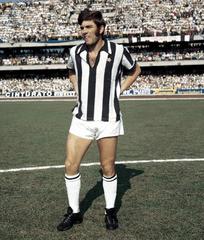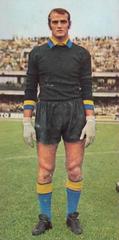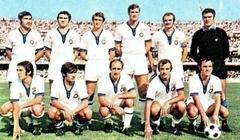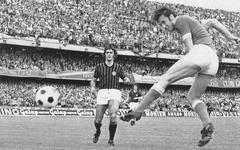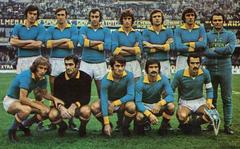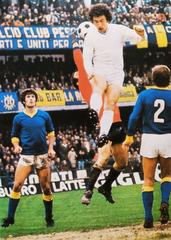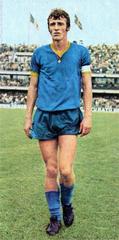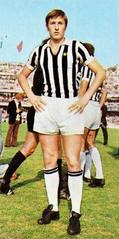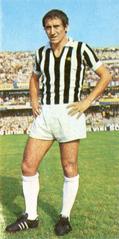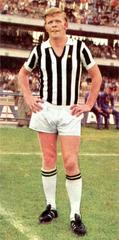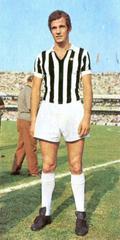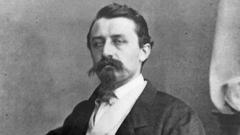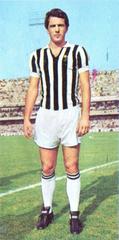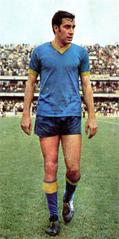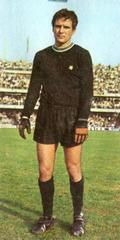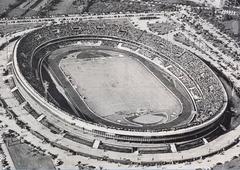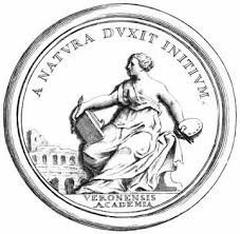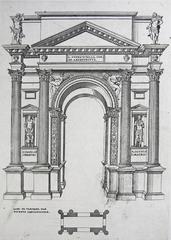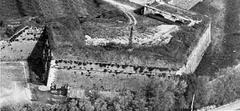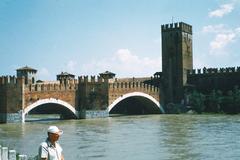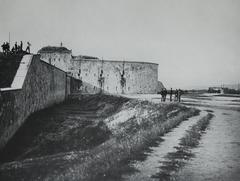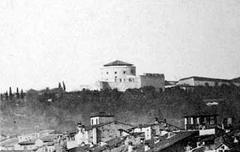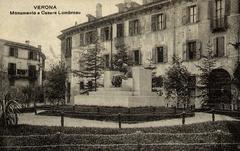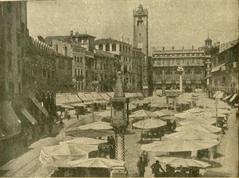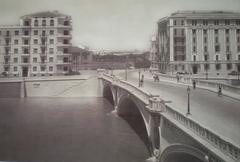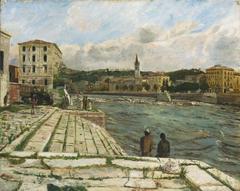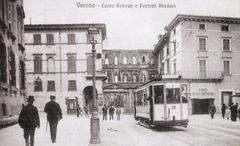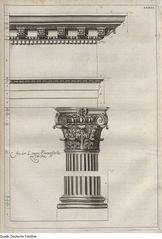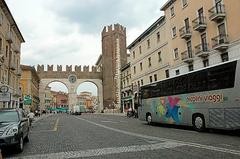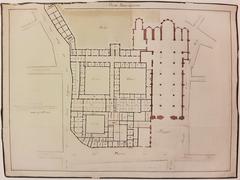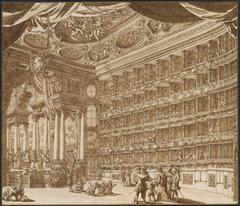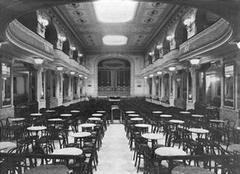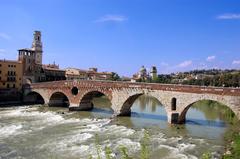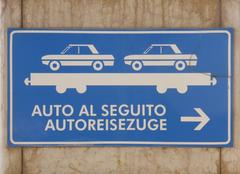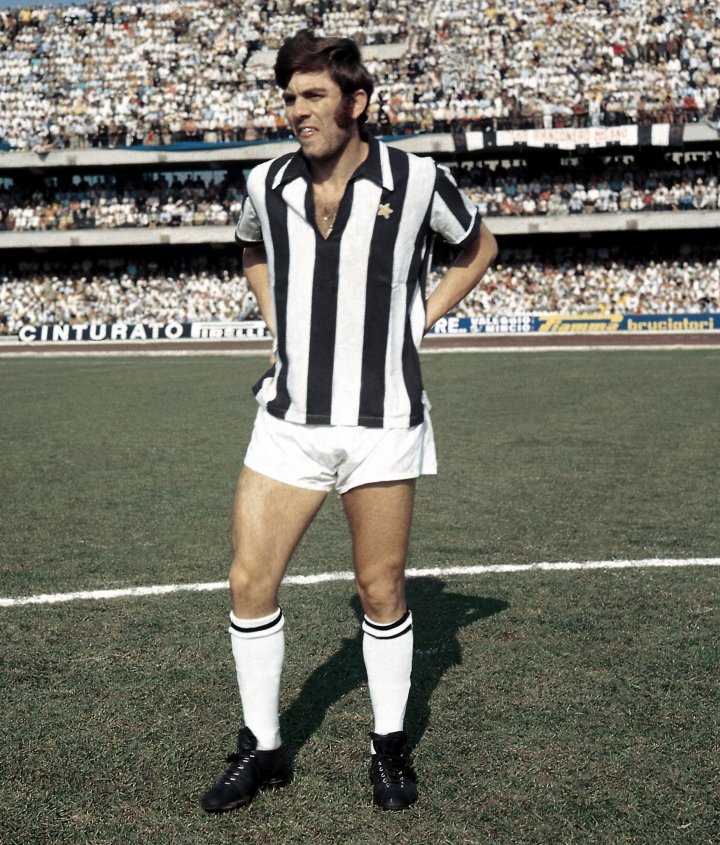
Stadio Marcantonio Bentegodi Visiting Hours, Tickets, and Verona Historical Sites Guide
Date: 14/06/2025
Introduction
Stadio Marcantonio Bentegodi stands as one of Verona’s most renowned landmarks, celebrated for its pivotal role in Italian football, its architectural significance, and its integration into the cultural fabric of the city. Since opening in 1963, the stadium has been synonymous with the footballing passion of Hellas Verona and, until recently, Chievo Verona, and remains the site of historic moments, such as Hellas Verona’s unlikely 1984–85 Serie A championship (Wikipedia; Sporteimpianti). Its elliptical design pays homage to Verona’s Arena, while substantial renovations for the 1990 FIFA World Cup brought the stadium international acclaim (Visit Verona; Stadium Guide).
Beyond sports, Bentegodi is a vibrant community hub, supporting local businesses and pioneering sustainability initiatives, such as its large-scale photovoltaic solar installation. This guide provides comprehensive information on the stadium’s architecture, history, visiting hours, ticketing, accessibility, and nearby attractions, ensuring you make the most of your visit to both the stadium and Verona’s historical sites (Football Ground Guide; StadiumDB).
Contents
- Introduction
- History and Sporting Significance
- Stadium Architecture and Design
- Visiting Hours and Tickets
- Accessibility and Visitor Amenities
- Getting There and Travel Tips
- Nearby Verona Historical Sites
- Notable Events and Future Developments
- Frequently Asked Questions (FAQ)
- Conclusion
- Sources
History and Sporting Significance
Opened in December 1963, Stadio Marcantonio Bentegodi was named after a 19th-century local benefactor who championed physical education and community sports (Archistadia). The stadium immediately became the heart of Verona football, hosting Hellas Verona and later Chievo Verona. The 1984–85 Serie A victory by Hellas Verona is one of Italian football’s greatest underdog stories, celebrated in Bentegodi’s stands (Sporteimpianti). The stadium has also staged iconic derbies, such as the “Derby della Scala” and matches in the “Derby del Veneto” and “Derby del Garda,” reinforcing its place as a cauldron of footballing rivalry (Gentleman Ultra).
Bentegodi’s international footprint was secured during the 1990 FIFA World Cup, when it hosted four matches, including a dramatic Round of 16 tie between Spain and Yugoslavia (Football Ground Guide). Its status as a multi-purpose arena is further underlined by regular rugby, athletics, and concert events (Wikipedia).
Stadium Architecture and Design
The Bentegodi’s elliptical structure, inspired by the Arena di Verona, was designed by Leopoldo Baruchello, Sergio Bonamico, Riccardo Guglielmi, and Silvano Zorzi. The stadium originally featured two open tiers and an athletics track, with subsequent extensions culminating in a third tier and a broad roof to meet FIFA standards for Italia ‘90 (Visit Verona). The current capacity is approximately 39,211, although safety limits restrict this to just over 31,000 for most events (Stadium Seating Plan).
The stadium is divided into four main sides—North, South, East, and West—with clear sectoring for home, away, and premium seating. Notably, the athletics track was resurfaced in 2010 to match Hellas Verona’s colors.
Visiting Hours and Tickets
Visiting Hours
Bentegodi is open to visitors primarily during scheduled football matches and major events. Guided tours are occasionally available on non-match days, generally between 10:00 AM and 5:00 PM, but always check the official Hellas Verona or stadium website for current schedules (Visit Verona).
Tickets
Tickets for matches should be purchased in advance via official club websites, authorized vendors, or the stadium ticket office on event days. All tickets are for assigned seats; prices vary by event, seating sector, and eligibility for discounts (children, seniors, groups). For concerts or international matches, ticketing arrangements may differ.
Entry on event days requires a valid ticket and government-issued ID. Early arrival is encouraged to facilitate security checks.
Accessibility and Visitor Amenities
Bentegodi is equipped with ramps, reserved seating, and accessible restrooms for disabled visitors, with dedicated entrances (notably Gate 14) on the East side (Visit Verona). Restrooms and concessions are widely available. Official team merchandise is sold at kiosks during events.
The stadium’s 2009 photovoltaic solar installation—Italy’s largest on a sports facility at the time—underscores its sustainability commitment (Visit Verona).
Getting There and Travel Tips
- Location: Piazzale Olimpia, 2, 37138 Verona VR, Italy (Google Maps)
- Public Transport: Bus lines 11, 12, and 13 stop at Piazzale Olimpia near the stadium. Verona Porta Nuova train station is a 15-minute walk away.
- Parking: Limited parking is available and fills quickly on event days; public transport is recommended.
For the best experience, wear comfortable shoes, arrive early, and avoid bringing large bags or prohibited items. Check event-specific guidelines for COVID-19 or security protocols.
Nearby Verona Historical Sites
A visit to Bentegodi can be combined with exploration of Verona’s celebrated attractions:
- Arena di Verona: A Roman amphitheater renowned for opera and concerts.
- Piazza Bra: The city’s largest square, a hub for dining and sightseeing.
- Juliet’s House: The legendary setting for Shakespeare’s “Romeo and Juliet.”
- Piazza delle Erbe: A vibrant market square surrounded by historic architecture.
These sites are easily accessible from the stadium, enhancing your cultural itinerary.
Notable Events and Future Developments
Bentegodi’s legacy includes hosting four matches during the 1990 FIFA World Cup, numerous Serie A derbies, and major concerts. In sustainability, the stadium led the way with its large photovoltaic system (Football Ground Guide).
Looking ahead, major redevelopment is planned as Verona prepares to host UEFA Euro 2032 matches. Upgrades will include a retractable roof, modern hospitality, improved accessibility, and multi-use community spaces, all while respecting the venue’s historic character (StadiumDB; The Stadium Business; Verona Tomorrow).
Frequently Asked Questions (FAQ)
Q: What are Stadio Marcantonio Bentegodi’s visiting hours?
A: The stadium is open during scheduled events and occasionally for tours (typically 10:00 AM–5:00 PM on non-match days); always verify with official sources.
Q: How can I buy tickets?
A: Purchase tickets through official club websites, authorized sellers, or at the stadium box office on event days.
Q: Is the stadium accessible for disabled visitors?
A: Yes, with dedicated entrances, seating, and restrooms.
Q: Are guided tours available?
A: Tours may be offered outside match days; check the stadium’s website for updates.
Q: What are the parking options?
A: Limited parking is available; public transport is strongly recommended.
Q: Which nearby attractions should I visit?
A: The Arena di Verona, Piazza Bra, Juliet’s House, and Piazza delle Erbe are all highly recommended.
Conclusion
Stadio Marcantonio Bentegodi is not only a monument to Verona’s sports and civic pride but also an architectural icon bridging the city’s Roman past and its sustainable future. Whether attending a high-stakes match, exploring its unique design, or using it as a gateway to discover Verona’s historical wonders, the Bentegodi offers an unforgettable experience for all visitors.
Stay informed about events, redevelopment updates, and travel tips by visiting the official Visit Verona website and download the Audiala app for exclusive content and real-time updates.
Sources
- Wikipedia
- Sporteimpianti
- Stadium Guide
- Visit Verona
- Football Ground Guide
- The Stadium Business
- Verona Tomorrow
- Archistadia
- Gentleman Ultra
- Stadium Seating Plan
- Santos Football Planet
